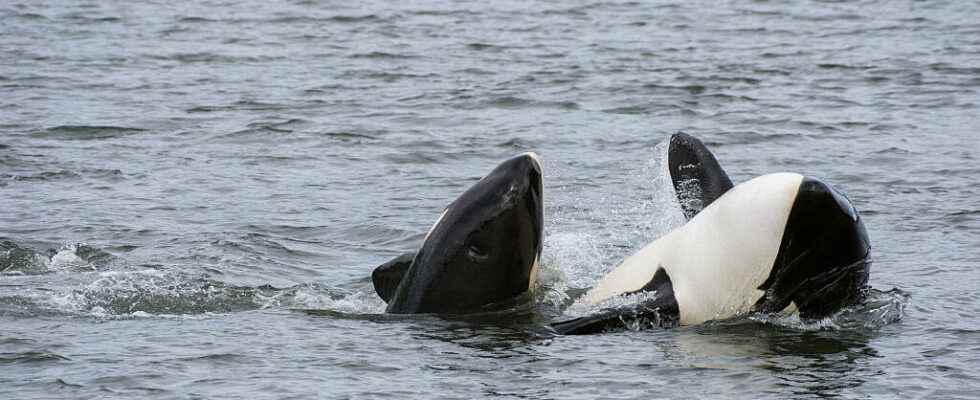The killer whale that wandered in the Seine finally died on Monday. The marine mammal is a top predator, at the top of the food chain in the oceans.
His ordeal lasted for many days, until its tragic end. The killer whale that roamed the Seine was finally found dead on Monday, when the decision had been made to euthanize the too weakened animal. But why did this marine mammal end up in a river, far from its natural habitat? First hypothesis put forward after the discovery of the animal in the Seine: sick, the orca would have been rejected by his family. A theory disputed today by several specialists contacted by RFI. “There is a huge solidarity between orcas, underlines the president of the NGO Sea Shepherd France, Lamya Essemlali. We remember these images shot in British Columbia [sur côte ouest du Canada] : a mother orc had carried the corpse of her calf for days. »
Sea Shepherd France rather points to human activities and in particular noise pollution in this region of Le Havre, at the mouth of the Seine. Killer whales communicate with each other by whistling and locate each other by echoing by emitting clicks. Perceptible signals up to 10 kilometers away. But beyond that, it is impossible to find his family. “There is a lot of maritime traffic, enormous noise pollution, emphasizes Lamya Essemlali. It is therefore possible that the orca lost her group by accident and that once alone she had difficulty feeding herself, which would explain why she was emaciated. »
Whale killers
Because killer whales hunt in groups, with remarkable intelligence. These top predators weighing several tons, at the very top of the food chain, can, for example, strike their tail violently on a piece of ice to knock the seal into the water. We also saw an orca emerge from the water, its mouth wide open, when a penguin threw itself into the water from the top of the pack ice. Killer whales, present in all the oceans, are also capable of attacking sharks and even whales. This is also the name of the orca in English: killer whaleskiller of whales.
In French, orque is a female name, because with this cousin of the dolphin it is the females who lead the dance, who know where the prey is and how to hunt it. A matriarchal organization which is undoubtedly due to the longevity of the female, which exceeds 80 years, even if orcas are no longer fertile halfway through their life. “What’s the point of surviving for so long when you’re no longer contributing to the reproduction of the group? interrogates Christophe Guinet, CNRS research director and specialist in marine mammals. We Iexplained by this experience effect. Dominant killer whales will of course raise their own young, but they will also be involved in raising their grandsons and granddaughters. This could explain this role of dominance, because of this experience, within orca families. »
mother power
Females thus live almost twice as long as males. “The moment the matriarch, the founding female, dies, the daughters tend to separate and leave with their own direct descendants, their own sons and daughters, continues Christophe Guinet. And what we also observed is that in the two years following the death of the matriarch, her sons will die, because they are rejected by their sisters. » Nature is sometimes cruel.
Killer whales, at the top of the food chain, have only one enemy: humans, especially fishermen who shoot at them when they get too close to their nets. Or which deplete, through overfishing, the food resources of orcas. Even apex predators are vulnerable.
THE QUESTION OF THE WEEK
Are humans super-predators?
Homo sapiens is even a hyperpredator. The only animal to kill more than reason, just for fun, and the largest prey, adults, when other predators feed on weaker prey. Apart from humans, responsible for the extinction of many species, apex predators contribute to the balance of nature. This is the case of the wolf, for example, reintroduced in Yellowstone Park in the United States. Its return helped regulate the populations of elk, which devoured the vegetation. The birds have returned, as well as the scavengers, the beavers… No need to cry wolf!
